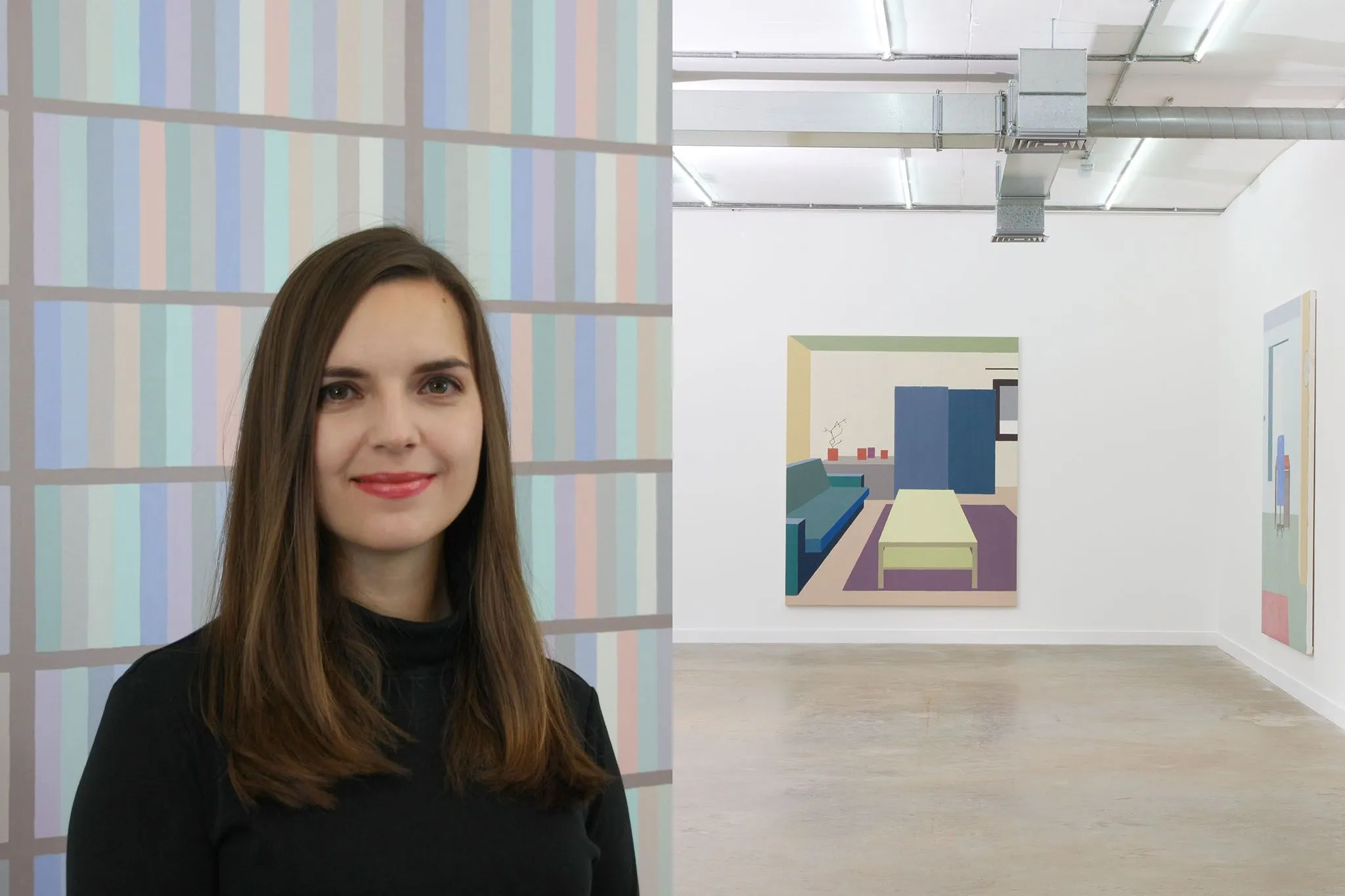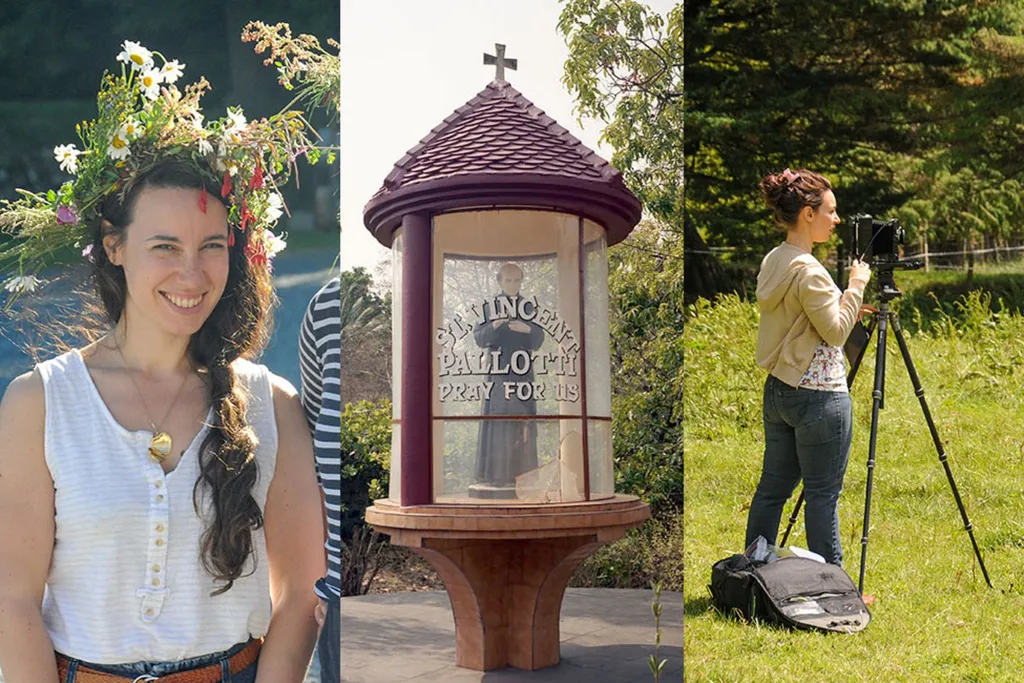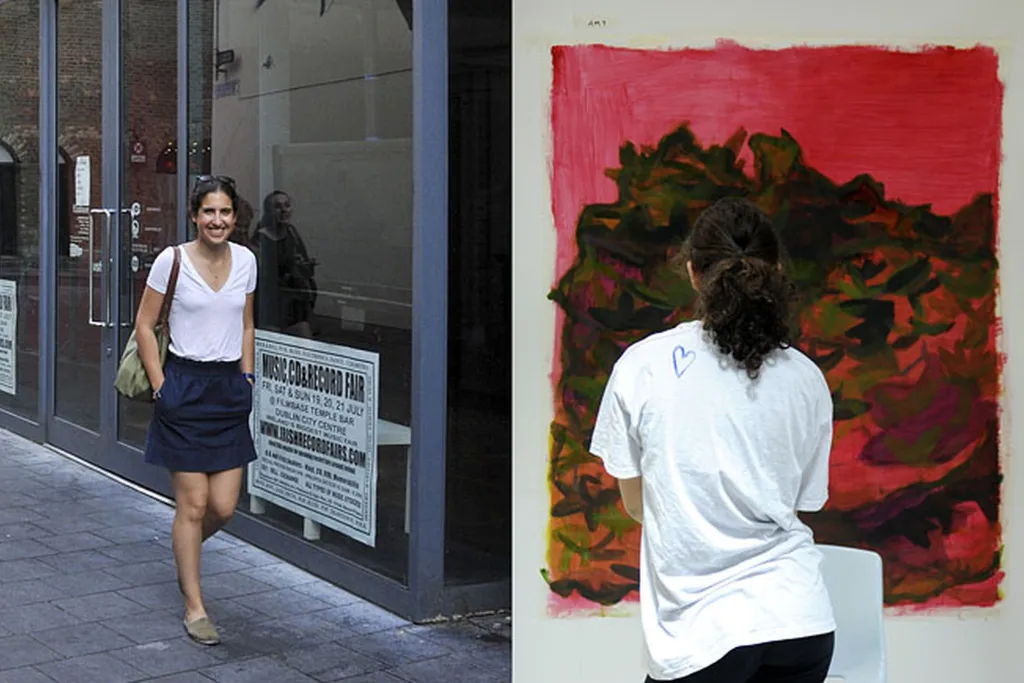Zsofia Schweger

Zsofia was one of our visiting artists for our Summer Arts Program; Art on the Farm in 2011 and taught painting alongside Rosie for the entire summer. She studied at Wellesley College before moving to London in 2013 where she attended the Slade School of Fine Art, graduating with an MA in 2015.
Zsofia was selected for Bloomberg New Contemporaries 2016 and has been supported by several generous prizes. These include the Jealous Prize, Griffin Art Prize, the Alice C. Cole Award, and the ‘One To Watch’ Award. Her first solo exhibition was held in 2016 at Griffin Gallery.
Zsofia was an exceptionally hard worker and woke up early every morning to paint before her teaching duties began. We had no doubts that she would do well and were thrilled to hear of her success. We’re grateful Zsofia has generously taken some time to answer a few of our questions.
CHS: What have you been working on most recently? Can you describe a bit about the themes you’ve been exploring?
ZS: Ever since I seriously began painting in college, I have been exploring interiors – I even painted a couple of Cow House Studios back in 2011 when I was staying and working with you. When it comes to interiors, I’m interested in human relationships to spaces in general, and ideas of home and belonging in particular.
My most recent paintings take libraries as their subject. On the one hand, I’m curious about libraries as spaces that support learning in a social and political climate where fact-based expertise might be less valued. And on the other, I’m very drawn to these very quiet and still spaces, which also have an air of permanence – I think painting is an appropriate medium to explore them. And when it comes to painting and day-to-day work in the studio, library interiors provide me with an opportunity to explore painterly interests about space, stillness, order and colour. But this is a new theme for me, I’ve been working on it for about six months, so there’s a lot to unpack still.
CHS: What has stayed with you from your time in Ireland? What are your most vivid memories of your time here at Cow House? How did the experience inform you as an artist?
ZS: I was incredibly lucky to spend a summer at Cow House, it was a formative period for me. I knew very little about Ireland at the time, so my most vivid memories are about the landscape – first from the hills and fields around the farm and then from the trips we took with the students. To this day, I tell people about Dun Aengus and the view out to the ocean from there. I’m pretty sure that view with its stillness, flatness, and gorgeous horizon line informed the way I paint. Same goes for the opportunity to visit Skellig Michael, which is another mind-blowing place I still think about often. I should say that since I grew up in the Great Plains of Hungary, which is a landlocked country anyway, I never experienced landscape like Ireland’s and I didn’t previously understand just how fascinating it could be.
CHS: As a visiting artist for the summer of 2011 teaching was a large part of your experience at Cow House. Is teaching something you would like to pursue further? What did you learn from passing on your knowledge of painting?
ZS: It was my first time teaching – or I should say assisting Rosie in teaching. I really enjoyed working with Cow House students in such an intensive studio environment and seeing them progress so quickly through the program! It was also meaningful for me to see Rosie and you, as well as Christin, the other 2011 visiting artist interact with the kids. I learned a lot from you guys about teaching! Putting this experience to use, I worked with private tutoring students in recent years, mostly on portfolio development and uni applications, which again is something I really enjoy. Other than that, however, I haven’t pursued teaching more seriously just yet, but it’s definitely something I might do in the future.
CHS: What compelled you to move from the United States to London after having already moved from Hungary at a younger age? Considering your work is informed by the experience of moving countries, do you foresee living in a different place anytime soon?
ZS: I had practical reasons for moving: I was in the U.S. for school, first through a high school scholarship and later for college at Wellesley. Looking back, I would have likely stayed in the U.S. were my student visa not about to expire, as I genuinely loved living there, in the Northeast. After Wellesley, I ended up in the UK because my immediate family (my parents and my younger brother) had moved from Budapest to London during my last year of college. So essentially, I came home to them, even though this home was in a new country by then. I’ve been in London for 5 years now, I love being close to my family, I’ve gone to grad school here, I’m feeling very settled. I live with my partner and we talk about perhaps moving elsewhere for shorter periods of time, but we shall see. I love London and I am grateful for my right to live and work here through my EU citizenship – and I hope not too much of that will change whatever happens with Brexit.
CHS: Your paintings are wonderfully reductive but are so clearly rooted in representing personal spaces. Can you describe a bit about your process? What are some of your starting points or references?
ZS: I tend to start with spaces I know well. In previous projects these came from my studio or my home; for my library paintings I’ve chosen spaces from my college and grad school libraries, both of which I know quite well.
I’ve been interested in developing a painterly language that works well with opposites like absence and presence, stillness and duration, or cosiness and dread. So I make use of alluring colours as I want my paintings to be attractive and inviting, but at the same time I apply paint in a reductive and flat manner, which I think hints at a sense of alienation. Same goes for the frequent use of one-point perspective in my compositions, which tend to lend an impenetrable sense to the depicted space. I like the idea of paintings that invite you in, but also lock you out. You’re both in and out.
I rely on a fairly methodical painting process. I typically work from simple observational graphite sketches of these spaces, although recently I’ve been experimenting with using photos and drawing on a tablet. I use these line sketches then to make a small study for the paintings. These studies give me an opportunity to edit my compositions, as well as to figure out and mix all the colours that I will use. By the time I get to the final canvas, usually all my decisions are made and all I have to do is paint. I really love that!


